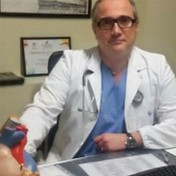The opinion of Dr Gian Luca MARTINELLI
Head of the cardiosurgery unit at IRCCS Multimedica Sesto San Giovanni - Milan
The project is the result of an idea from the 90s: partial assistance to help a sick heart without the need for external energy. Finally, after the manufacture of several prototypes, we were able to start experiments with extremely encouraging initial results. The system appears to be simple to set up, compatible with the organism and effective in increasing cardiac output.


The technical aspect: Pr Philippe PRIMO CAIMMI
Head of R&D units Novara University Hospital
As it does not require an external power source, the device is not subject to infectious contamination of the connecting cable to the external power source. The implantation of this system is done without cardiopulmonary bypass (CPB). The embolic risk of the device should be reduced by the shape of the elastic expandable chamber which has the inflow and outflow directly in the main axis. In addition, since the outflow duct is anastomosed into the descending thoracic aorta, the risk of stroke is minimized with the sole risk of peripheral embolism. Due to its extracardiac position, the device can be combined with other heart failure procedures such as cardiac resynchronization therapy devices, Mitraclip aortic valve implantation and transcatheter. With adequate recovery of cardiac function, the device can remain in place with mild preventive thromboembolism or can be easily removed without the use of CPAP. In particular, unlike devices with an apical ventricular connection, removal is devoid of embolic risk and does not result in loss of apical myocardial function. "
